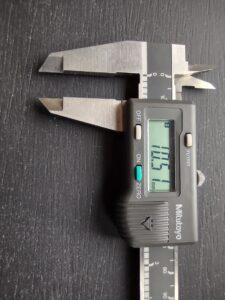Baja SAE Carolina: The Ultimate Off-Road Engineering Experience
February 5, 2025
Baja SAE, Baja SAE Carolina, Collegiate Design, engineering, Hands-On Learning, Off-Road Vehicles, Practical Experience, Student Competition, Teamwork
APQP, Cost Management, Learning Organization, Line Management, Manufacturing, Process Improvement, Product Development, Project Management, Prototype, Quality, Requirements Management, Testing, Training, Uncategorized, Validation, Verification
Introduction
For budding engineers, theoretical knowledge alone is never enough. Practical experience plays a critical role in shaping future innovators who are well-prepared to tackle real-world problems. One such opportunity to gain hands-on exposure is Baja SAE Carolina. This premier off-road engineering competition challenges students to design, build, and race their vehicles. This post will explore the importance of practical projects, how this event enhances crucial engineering skills, and why it remains a top choice for ambitious students worldwide.
It has been a few minutes since I was working on my engineering degree. Still, I recall fondly the projects that provided opportunities to create solutions by applying what I was expected to learn. More importantly, there is a need to figure out how to connect engineering domains (physics and math) with creativity and find a solution. After all, if the problems were that common, a known solution would already be in place. Engineering is as much about creativity as it is about the technical issues. I recall one amplifier project while at university, the objective of which was to set the performance around a wide range of temperatures. This was an opportunity to apply knowledge and creativity.
I have, from time to time, had chats with budding engineers at universities who have lamented a dearth of actual applications. I recall one student lamenting that the professor would even say the thing being learned would not be something the budding would-be engineer would ever use. What sort of motivation does this provide for the engineer?
Overview of Baja SAE Carolina
Baja SAE Carolina (Key Phrase Usage #1) stands out among collegiate engineering competitions for its intense focus on real-world design and fabrication. Student teams immerse themselves in every development phase, from brainstorming conceptual designs to crafting robust prototypes capable of conquering challenging off-road terrains. This competitive environment fosters problem-solving and teamwork while pushing participants to innovate under pressure. This event begins with the design challenge: technical inspections and vehicle demonstrations via acceleration, deceleration, maneuverability, handling and endurance challenges.
Why Practical Experience Matters
Classroom lessons provide a strong foundation in theory, but the real magic happens when students apply that theory to tangible projects. Building an off-road vehicle for Baja SAE Carolina (Key Phrase Usage #2) allows engineering enthusiasts to bridge the gap between textbook learning and actual industry practices. Students sharpen their technical and soft skills by gaining exposure to hands-on tasks—such as welding, machining, and testing—making them more marketable to future employers.
Essential Skills Gained
Listening to some expert pontificate in a lecture hall is not really learning. It may be necessary to some degree, but it is not the be-all and end-all. This is not to disparage those lecturers, and perhaps it is not so ubiquitous. Personally, when I teach, I ask the students many questions. The student feedback from these events confirms this. I guest lectured on Configuration Management with Kim Robertson, at Eindhoven University of Technology, even the department head recognized my style as a differentiator.
- Team Collaboration
Working in teams simulates the collaborative nature of professional engineering environments. Communication and coordination become essential as members align on design goals, timelines, and resource allocation. - Project Management
From budgeting materials to scheduling manufacturing tasks, students learn to manage resources and meet deadlines—vital skills they will leverage in their professional careers. - Technical Proficiency
The competition demands mechanical design, powertrain engineering, and structural analysis expertise. Participants gain invaluable experience in CAD modeling, fabrication techniques, and vehicle dynamics. - Problem-Solving
Off-road racing conditions are unpredictable. Teams must troubleshoot mechanical breakdowns, adapt to terrain challenges, and optimize vehicle performance under time pressure.
How to Get Involved
Whether you’re a freshman looking for hands-on exposure or a senior ready to put theory into practice, Baja SAE Carolina offers an immersive platform. Most universities host collegiate chapters or clubs dedicated to designing competition vehicles. Check with your school’s engineering department, join a team, and start building your off-road racer today.
For more information on becoming a sponsor or volunteer, please contact bajasaecarolina2025@gmail.com or Jeff Poland at jpoland.sae@gmail.com.
Conclusion
Participating in events like Baja SAE Carolina refines your technical abilities and cultivates leadership, teamwork, and critical thinking. These are the traits that tomorrow’s innovators will need to thrive. Embrace the challenge, learn from every road bump, and emerge as a well-rounded engineer ready to tackle whatever the future holds.
For more information, contact us:
Follow us on social media at:
Amazon Author Central https://www.amazon.com/-/e/B002A56N5E
Follow us on LinkedIn: https://www.linkedin.com/in/jonmquigley/


